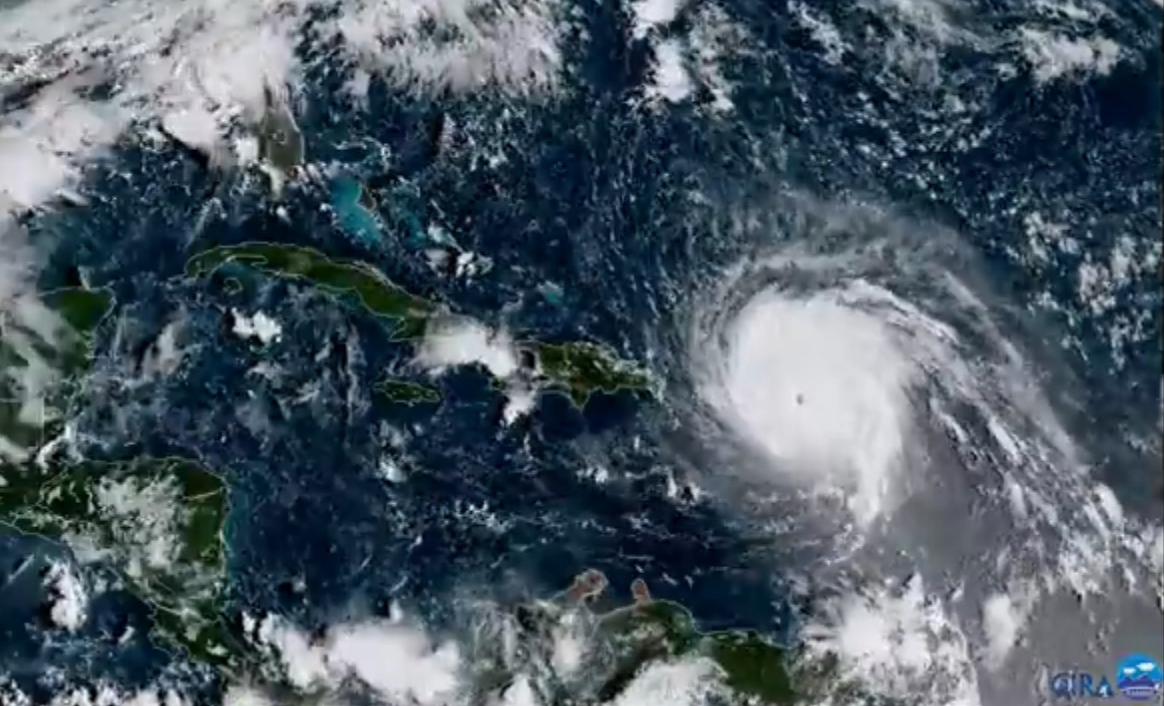
NASHVILLE (BP) — The second major hurricane threatening the U.S. within two weeks has Southern Baptists and their partners actively preparing to respond to Hurricane Irma, even as Harvey recovery efforts hunker down for the long haul.
With flood waters still standing in some parts of Texas, and Category 5 Irma churning, President Trump has declared states of emergency in Florida, Puerto Rico and the U.S. Virgin Islands.
Southern Baptist disaster relief teams are preparing to meet the challenge of responding to both storms.
“Everyone is stretched thin in this,” David Melber, North American Mission Board (NAMB) vice president for Send Relief, told Baptist Press. “But this is causing us to come together and function at a much higher level due to the magnitude of what happened in Texas and what is looming in the Caribbean.”
Irma’s 185-mph winds could threaten lives and cause catastrophic damage to the Florida Peninsula and the Florida Keys as early as this weekend, the National Hurricane Center (NHC) said today (Sept. 6).
A NAMB team member is already representing Southern Baptist Disaster Relief at the Federal Emergency Management Agency’s (FEMA) National Response Coordination Center in Washington. NAMB is working alongside FEMA, the American Red Cross and the Salvation Army to map impending needs.
NAMB also has a representative coordinating recovery efforts in Florida alongside the Florida Baptist Convention. FBC Executive Director Tommy Green assured the public of the convention’s readiness and encouraged supporters to pray.
“Our disaster relief teams are already prepared and staging to meet the disaster needs quickly and expeditiously in the case of landfall of Hurricane Irma,” Green said in a video message at flbaptist.org. “We are grateful for our partners with the North American Mission Board and other state conventions who are already staging to come beside us in the event of that need.”
While actively bracing for Irma, Florida Baptists are prayerful and thankful for volunteers participating in Harvey recovery efforts, Green said.
“We continue to pray, we continue to give, we continue to be faithful in the Gospel ministry God has given us in Florida,” he said. “We continue to pray for those who have been impacted by Hurricane Harvey and for those responding to their needs.”
NAMB will continue to work alongside state leaders as Southern Baptists cooperate to send disaster relief resources where they are needed most, Melber said. Florida Gov. Rick Scott and South Carolina Governor Henry McMaster have both declared a state of emergency.
Irma powered ashore islands in the Caribbean Sea early today, first striking Barbuda, St. Barthelemy and St. Martin before biting portions of the British and U.S. Virgin Islands, the NHC said. Winds surpassed just over 184 mph as the NHH issued a hurricane warning for the northern coast of the Dominican Republic, the southeastern Bahamas, the Turks and Caicos, and portions of Haiti.
The path could change, but forecast models have the storm hitting Puerto Rico this evening, reaching Haiti and the Dominican Republic Thursday evening (Sept. 7), making landfall in Cuba Friday evening (Sept. 8) and traveling across Cuba through Saturday (Sept. 9).
If Hurricane Irma strikes the U.S., it will likely hit south Florida near Miami on Sunday (Sept. 10) afternoon or evening. It is still too early to tell precisely when and where the storm will strike. Miami-Dade County and other area governments are setting up shelters and planning evacuations.
Disaster relief and community development group Baptist Global Response (BGR), a Southern Baptist partner, is focusing primarily on relief efforts outside the U.S., BGR CEO Jeff Palmer told BP.
“We are in initial conversations with NAMB and the Florida Baptist Convention (representatives) who have work/ministry assignments for Puerto Rico, Hispanola, etc.,” Palmer told BP. “We are trying to find the best ways to work to maximize resources for the needed Caribbean response.”
In Puerto Rico, the loss of power is one of the biggest fears. If Irma knocks out the island’s power, officials expect that it would take weeks or months to restore, which would make recovery efforts extremely difficult.
Puerto Rico’s governor, Ricardo Rosselló said through CNN affiliate WAPA, “The magnitude of this storm … has never been seen before in Puerto Rico.”
NAMB and various state convention teams are already active in robust efforts to help Texas and Louisiana areas impacted by Hurricane Harvey, projected to extend long-term.
Harvey first struck Corpus Christi, Texas, Aug. 25 as a Category 4 hurricane. Weakened by land, the massive storm reentered the gulf, strengthened and made landfall again. Harvey poured record-setting rainfall over Houston and flooded large portions of the city before moving east and doing the same in a path through eastern Texas and parts of western Louisiana.
Harvey’s death toll was last calculated at 63, but might rise as recovery efforts continue.













